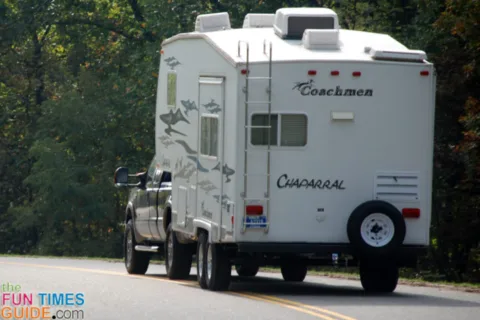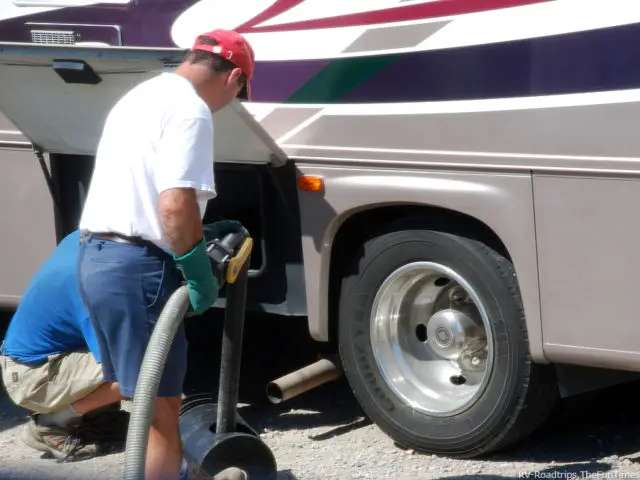The owners manual on every new RV states that you should re-torque the wheel nuts or lug nuts after the first 100 miles or so. Then periodically recheck the torque to make sure nothing has changed.
This is a critical safety issue that often gets overlooked or just ignored.
In fact, aside from occasionally checking the tread or overall tire condition, most RVers seldom give the wheels under their RV a second thought.

Years ago, when I worked for an RV dealership, we received a call from a recent customer. Soon after buying a new travel trailer, they hit the highway for a lengthy cross-country adventure. However, at about 1,000 miles from home, they lost a wheel off their trailer. Lug nuts had come loose, letting the wheel wobble. In no time, the holes became oblong and after several studs had become damaged, the wheel parted ways from the trailer.
Check Your RV Wheels & Lug Nuts!
In the old days, checking lug nuts meant taking a cross bar lug wrench and giving each lug nut a good hearty twist. Today, we know better.
The possibility of damaging those studs is very real. A big husky guy can easily twist off a wheel stud on many trailers. While a 98-pound weakling may get sand kicked in his face at the beach, he still will have the strength to stretch threads by applying excessive torque while tightening lug nuts.
There is a proper procedure and a specific torque value that needs to be applied to each individual RV. Your owner’s manual should contain this information. Or there might be a sticker or label attached in the area of your wheels that will tell you proper tire inflation levels, as well as wheel nut torque.
Proper torque is determined by the diameter of the wheel studs and the makeup of the steel in both the nuts and the studs.
When installing a wheel on your trailer, the proper procedure for mounting is as follows:
1. Place the wheel on the hub and install all lug nuts finger tight.
2. Make sure that all lug nuts are properly centered in their holes on the wheel and that they are settling into the flanged portion of those holes.
3. Snug down alternating nuts in a back and forth pattern. Don’t tighten in a circular pattern.
4. Following the same back and forth pattern, tighten to the specified torque with a torque wrench.
5. About 100 miles later, recheck the wheel nuts with a torque wrench.
Use less labor to torque lug nuts by using a torque multiplier RV lug nut wrench.
Painted Or Contaminated Thread Surfaces
A contaminated thread surface will prevent you from obtaining the proper torque on your lug nuts. Or it may even destroy the threads when you attempt installation or removal.
It’s very common when someone is selling a used RV to repaint the wheels in an effort to improve the overall appearance of the unit. Seldom do they avoid painting the wheel studs and nuts — which, in effect, will increase the diameter of the stud.
When you try to remove the nut over this paint, the nut will bind up. By forcing through the paint, you will likely damage or destroy the threads in the nut or on the stud. Either way, the end result may be that the wheel separates itself from the hub and the RV comes crashing to the ground.
Always remove all dirt, paint, or rust buildup that has accumulated on the wheel stud before attempting to remove the nut. A wire wheel brush attached to a portable drill will take care of these situations.
When re-installing the wheel nuts, never apply grease thinking that it will aid in securing the wheel. Grease will lessen the friction (or bite) when the nut gets tight and may allow it to back off while driving. At most, a spray of WD40 (or a degreaser) to clean out the threads of loose particles, followed by wiping with a clean cloth to remove any excess, is acceptable.
Proper protection against rust or dirt would be a removable lug nut cap or RV hub cap that protects the exposed portion of the wheel stud.
The wheels under your RV are what allow you to keep on rolling down the highway. Taking the time to make sure that they’re properly secured before you hit the road will prevent an expensive — or even deadly — disaster from happening.
Make sure all your RV trips start out right. Be sure to check your lug nuts!



